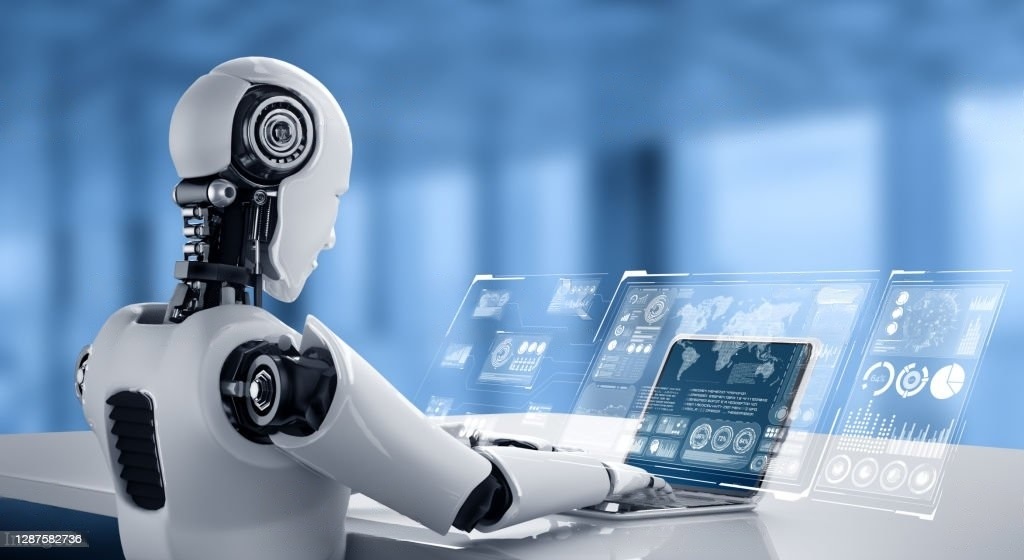As you know we are living in a world of humans and machine humans have been evolving and learning from the experience for millions of years
On the other hand, the era of machine and robots have just begun now you can consider it in a way that currently we are living in the primitive age of machines while the future of machines is enormous and is beyond a scope of imagination
Let’s suppose one day you went for shopping apples the vendor had a cart full of apples from where you could handpick them weigh them and pay them according to the fixed rate now the question arises is:
How will you choose the best apples?
After trying hundreds of apples, you found out that:
- Bigger and brighter red apples are guaranteed to be sweet
- Smaller bright red apples are sweet only half the time
But is this the only parameter for selecting best apples, well, no there are others parameters as well like weather, region, soil etc.
As humans you would follow these rules, every time you make a new observation from your experiments you must modify the list of rules manually you have to understand the details of all the factors affecting the quality of the apples which is challenging and time consuming.
So, this is where machine learning comes into picture.
Machine learning is a concept which allows the machine to learn from examples and experience and that too without being explicitly programmed
In this article, we will go through a high-level introduction to Machine Learning Insights and its application in real-time, you will also see how machine learning can be implemented and its future application.
So, let’s get started!
Table of Contents
- What is Machine Learning?
- Importance of Machine Learning
- Types of Machine Learning
- Machine Learning Algorithms
- Machine Learning Applications
- Summary
What is Machine Learning?
Well, machine learning is a sub domain of computer science that focuses on certain algorithms, which might help a computer learn from data, without a programmer being there telling the computer exactly what to do.
That’s what we call explicit programming.
So you might have heard of AI and ML and data science and how they are connected.
AI – AI is artificial intelligence. And that’s an area of computer science, where the goal is to enable computers and machines to perform human like tasks and simulate human behavior.
Machine Learning – is a subset of AI that tries to solve one specific problem and make predictions using certain data.
Data Science – is a field that attempts to find patterns and draw insights from data. And that might mean we’re using machine learning. So, all of these field’s kind of overlap, and all of them might use machine learning.
Importance of Machine Learning
Machine learning is an important field that helps computers learn from data and make decisions on their own.
Here are some reasons why it’s important:
- Machine learning is what makes our smartphones and other gadgets smart – they can learn from our behavior and adapt to our needs over time
- It’s used in lots of popular applications like Siri, Alexa, Netflix and Spotify, which use machine learning to recommend things to us based on our preferences
- Machine learning is also used in fields like healthcare, where it can help doctors diagnose diseases and recommend treatments more accurately
- In industries like finance and retail, machine learning is used to identify patterns and trends in data, which can help companies make better decisions and predict future outcomes
- Machine learning is important because it can help us solve complex problems that would be difficult for humans to do manually, like analyzing large amounts of data quickly and accurately
- It’s also a really exciting field to work in, with lots of job opportunities in the tech industry for people who are interested in programming and data analysis
Types of Machine Learning
There are various types of machine learning, but here are some of the most common ones:
Supervised Learning
- Supervised learning involves training a model on labeled data, where the correct answers are provided along with the data
- Supervised learning is used for tasks like classification, regression, and prediction
- Linear regression, logistic regression, decision trees, and support vector machines (SVMs)
- According to a report by Grand View Research, the global market for supervised learning is expected to reach $3.5 billion by 2025
Unsupervised Learning
- Unsupervised learning involves training a model on unlabeled data, where the correct answers are not provided
- Unsupervised learning is used for tasks like clustering and anomaly detection
- K-means clustering, principal component analysis (PCA), and autoencoders
- According to a report by MarketsandMarkets, the global market for unsupervised learning is expected to grow from $1.3 billion in 2020 to $4.2 billion by 2025
Semi-Supervised Learning
- Semi-supervised learning involves training a model on a mix of labeled and unlabeled data, with the goal of improving accuracy
- Semi-supervised learning is used in tasks where labeled data is expensive or difficult to obtain
- Self-training, co-training, and tri-training
- According to a study by Google, semi-supervised learning can significantly improve accuracy on tasks like speech recognition, natural language processing, and image classification
Reinforcement Learning
- Reinforcement learning involves training a model to make decisions in an environment, with the goal of maximizing a reward
- Reinforcement learning is used in tasks like game playing, robotics, and autonomous vehicles
- Q-learning, policy gradients, and actor-critic methods
- According to a report by Allied Market Research, the global market for reinforcement learning is expected to grow from $218 million in 2019 to $9.8 billion by 2027
Machine Learning Algorithms
Machine learning algorithms are a set of mathematical models and techniques that enable computers to learn from data and make predictions or decisions without being explicitly programmed. These algorithms are used in a wide range of applications, from predicting stock prices to recognizing faces in photos.
Some examples:
- A machine learning algorithm can analyze thousands of medical images in a matter of minutes, while it might take a human doctor hour or even days to do the same.
- In a recent study, a machine learning algorithm was able to diagnose skin cancer more accurately than a team of expert dermatologists.
Here is the list of machine learning algorithms:
Linear Regression
Imagine you want to predict how much money someone will spend at a store based on how much money they make. Linear regression is a way to create a line that best fits the data points on a graph, so you can predict how much someone will spend based on their income.
For example, if someone makes $50,000 per year, you could predict they might spend $500 at your store.
Logistic Regression
This is similar to linear regression, but instead of predicting a continuous value (like how much money someone will spend), logistic regression predicts a binary value (like whether someone will buy a product or not).
For example, you could use logistic regression to predict whether someone will click on an ad or not based on their age and gender. This algorithm is widely used in marketing and advertising to target ads to the right audience.
Decision Trees
A decision tree is a way to visualize a set of decisions and their possible consequences.
For example, if you want to decide whether to go to the beach or not, you might create a decision tree that considers the weather, your schedule, and other factors. This algorithm is often used in industries such as finance and healthcare to make important decisions.
Random Forest
A random forest is a collection of decision trees that work together to make a prediction.
For example, if you want to predict whether someone will buy a product or not, you might create a random forest that uses several decision trees to make a more accurate prediction. This algorithm is widely used in applications such as fraud detection and medical diagnosis
Naive Bayes
Naive Bayes is a probabilistic algorithm that predicts the likelihood of an event based on prior knowledge.
For example, if you want to predict whether an email is spam or not, you might use Naive Bayes to calculate the probability that certain words in the email indicate spam. This algorithm is often used in natural language processing and text classification
K-Nearest Neighbors
This algorithm predicts the class of a new data point by finding the K-nearest data points in the training set and using their class labels.
For example, if you want to predict whether a new customer will buy a product or not, you might use KNN to find the customers in your database who are most similar to the new customer and use their buying behavior to make a prediction.
Support Vector Machines
SVM is an algorithm that finds the best line or hyperplane to separate data points into different classes.
For example, if you want to separate pictures of dogs and cats, you might use SVM to find the best line that separates the two groups. This algorithm is often used in image classification and pattern recognition.
Neural Networks
Neural networks are a type of machine learning algorithm that are inspired by the structure of the human brain.
There are several types of neural networks, including multilayer perceptron, convolutional neural networks, and recurrent neural networks. These algorithms are used in a wide range of applications, including image recognition, natural language processing, and self-driving cars.
Machine Learning Applications
Machine learning applications are vast and wide-ranging, with countless potential uses in fields such as finance, healthcare, transportation, and entertainment.
Here is the list of few applications in machine learning world:
- Image Recognition – Machine learning algorithms can be trained to recognize and classify objects in images with high accuracy. For example, Google’s image recognition system has an accuracy rate of 94%, meaning it can correctly identify objects in images 94% of the time.
- Natural Language Processing – Machine learning algorithms can be used to analyze and understand human language, making it possible to build chatbots, language translation systems, and voice assistants. For example, Amazon’s Alexa uses natural language processing to understand and respond to voice commands.
- Fraud Detection – Machine learning algorithms can be trained to detect patterns and anomalies in financial data, making it possible to identify fraudulent transactions. For example, American Express uses machine learning algorithms to detect credit card fraud in real time, preventing millions of dollars in losses each year.
- Medical Diagnosis – Machine learning algorithms can be used to analyze medical images and patient data to make more accurate diagnoses and treatment recommendations. For example, a machine learning algorithm developed by Google was able to diagnose breast cancer with an accuracy rate of 94%, outperforming human radiologists.
- Self-Driving Cars – Machine learning algorithms are at the heart of self-driving car technology, enabling cars to recognize and respond to traffic, pedestrians, and other obstacles. For example, Tesla’s Autopilot system uses machine learning algorithms to navigate roads and highways, with over a million miles of real-world driving data used to improve its accuracy and safety.
- Recommender Systems – Machine learning algorithms can be used to analyze user behavior and make personalized recommendations for products, services, and content. For example, Netflix uses machine learning algorithms to recommend TV shows and movies to its users, resulting in a significant increase in customer retention and engagement.
- Speech Recognition – Machine learning algorithms can be used to recognize and transcribe human speech, making it possible to build speech-to-text systems, voice assistants, and dictation software. For example, Google’s speech recognition system has an accuracy rate of over 95%, making it one of the most accurate speech recognition systems in the world.
Summary
In this article, we explored the exciting world of machine learning, which is a type of artificial intelligence that enables computers to learn from data and make predictions or decisions without being explicitly programmed.
We looked at some of the most popular machine learning algorithms, and we also examined some of the fascinating applications of machine learning.
These examples show how machine learning is transforming the way we live, work, and play, and how it has the potential to revolutionize many different industries.
After all, machine learning is a rapidly evolving field with countless opportunities and challenges. By understanding the basics of machine learning, you can start to appreciate the incredible power and potential of this technology, and perhaps even explore ways to apply it in your own life and career.
Thank you for reading our blog, we hope you found the information provided helpful and informative. We invite you to follow and share this blog with your colleagues and friends if you found it useful.
Share your thoughts and ideas in the comments below. To get in touch with us, please send an email to dataspaceconsulting@gmail.com or contactus@dataspacein.com.
You can also visit our website – DataspaceAI


